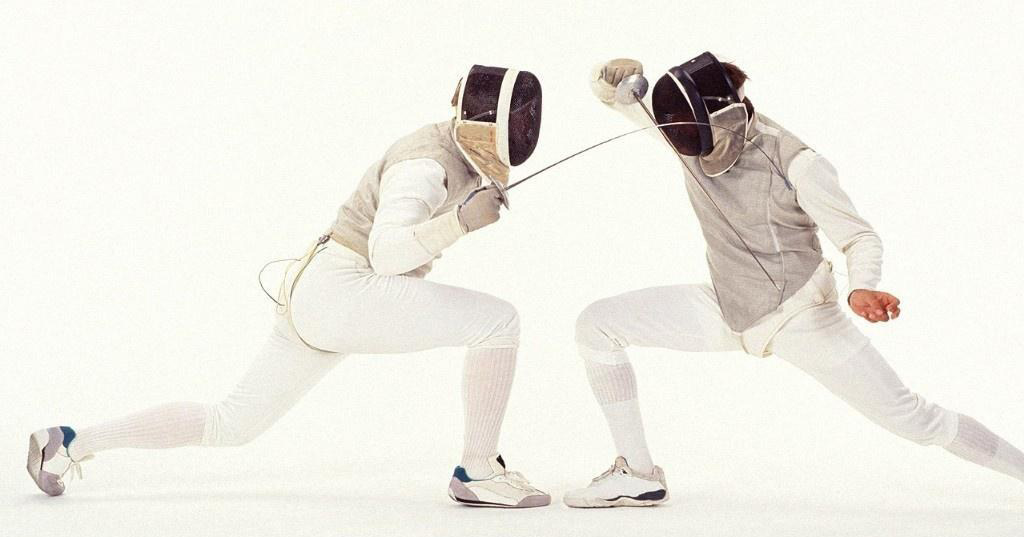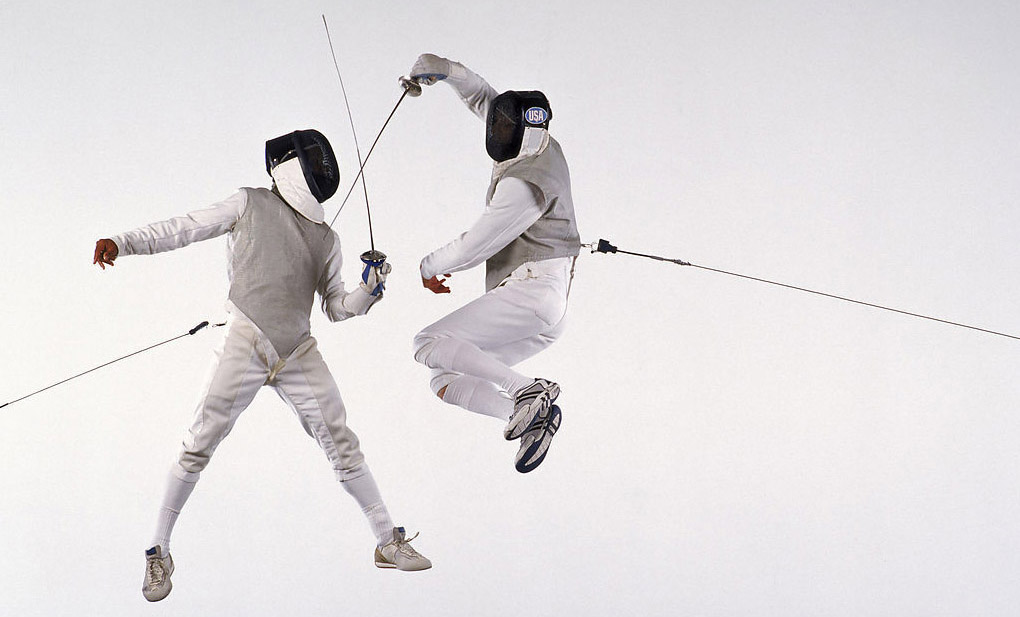1、 Fencing Training heart casts personality
Practicing sword is very good for urban people who sit in the office for a long time, especially in forging self-confidence and temperament.
Calming fencing is a mind sport and a one-to-one short-range weapon confrontational sport. It requires constant observation, constant thinking, rapid response, agility, decisiveness, seizing the opportunity, quick action and defeating the enemy. Therefore, it requires high physical coordination. Fencing is jokingly called "playing chess with body muscles". It can cultivate a calm personality and clear thinking. People who practice fencing have strong prediction ability. In fact, fencing is the ideological confrontation between two people through the sword in their hands.
Releasing pressure fencing can exercise agile and flexible thinking, adaptability and various psychological qualities to overcome difficulties. At the same time, fencing can increase the flexibility and agility of the body. When a sword hits the target, the pressure accumulated at ordinary times is released.
Cultivate temperament. If you don't keep your posture upright and vigorous, the attack and defense of fencing can't be carried out, which makes women's posture look noble and reserved. Although it needs to rely on explosive power, fencing is also a highly skilled sport. It can improve the quality of participants in terms of strain, strength, endurance, sensitivity and flexibility, so that women can not only have strength but also lose the softness of their body, and make good corrections to their body shape. Fencing also has a strong sense of ceremony: snow-white sword clothes, shiny steel swords and elegant movements can let participants shape their temperament.

2、 Fencing Training style
Compared with other sports, the big muscle group always drives the small muscle group. Fencing is a movement in which the small muscle group drives the big muscle group. It has the self-cultivation effect that can not be replaced by other sports. It is especially suitable for the body shape cultivation requirements of stretching body lines and not producing massive muscles.
*Fencing is a combination of aerobic and anaerobic sports. Moving back and forth belongs to aerobic sports. The moment of attack and the process of fierce confrontation belong to anaerobic sports.
*Fencing can shape the leg lines, because the basic action of fencing is to open the hip joint. This posture makes the inner thigh muscles fully exercised. Because the legs are always moving, the exercise of fencing on the legs is reflected in the pace.
*In the basic attack and defense of fencing, we need to use the waist and abdomen flexibly, which can reduce the girl's small stomach and the man's beer belly. In addition to losing fat, we can also exercise the abdomen. Therefore, the waist and abdomen life buoys of the bucket can be eliminated.
*In addition, the buttocks of people practicing fencing will be very warped, because the upper body is straight when fencing, so the buttocks will be very tight, so as to achieve the effect.
*The arm is the main part used to attack, so swing back and forth from time to time, so that the arm can be fully moved, and the worship meat is gone.
*In practice, you should wear a thick three piece suit for fencing. The heat consumed per hour can reach 690 kcal. This suit has an obvious effect than wrapping plastic wrap or wearing thin clothes. Although the fencing playground is a metal Kendo less than two meters wide, it is equivalent to running back and forth. In fact, the amount of exercise is large enough.
In addition, fencing has requirements for the practitioner's posture and ligaments, so in the long run, each practitioner can gain a tall and slim figure.

3、 Basic action essentials of fencing practice
In the spacious training ground and two meter wide metal Kendo, ordinary fitness fencing does not need as many complex movements as competitive fencing. As long as you master the basic essentials and do more practical training, you can achieve the role of decompression and entertainment no matter old or young.
1. Actual combat posture
It is a unique posture of fencing. It is under this specific posture that the fencer starts the attack and defense combat.
*Basic standing posture
Right foot in front, toes outward; The left foot is behind and the toe is inward; The feet are at right angles, and the distance between the feet is about the same width as the shoulder (friends who are used to the left hand do the opposite). The front knee is on the vertical line of the forefoot back; The knee of the hind leg is on the vertical line of the rear toe; The center of gravity of the body is between the feet. The palm of the sword arm tilts inward and upward, the sword body is in the same line with the forearm, the sword tip is the same height as your neck, and points to the third part of the opponent (one of the effective attack positions of fencing). The sword body, forearm, upper arm and trunk are kept in the same vertical direction. The non sword arm is naturally bent and lifted on the body side, and the wrist is naturally relaxed. The trunk is upright and slightly chest, the shoulders relax naturally, and the head is upright and facing the opponent in front.
2. Forward backward footwork
Fencing is a vertical movement with only forward or backward steps. It is a reasonable and effective way to move your feet. The offensive and defensive actions in actual combat should rely on the movement of footwork to find and create effective distance, and cooperate with the play of hand technology to achieve the goal. In the training of footwork technology, we should pay attention to maintaining fast start, smooth movement and mutual conversion between footwork. At the same time, we should cooperate with different body postures according to the needs of technical and tactical movements, and reasonably adjust the body center of gravity, so as to achieve the purpose of hand foot coordination.
Action points: slightly extend the front toe (bend the instep), then stick to the ground, step forward with the lower leg for about a foot distance, and then land on the heel first to land on the whole foot; Step forward (start) with the front foot, and push the inner side of the front foot forward from the ground at the same distance as the front foot; The torso moves forward as the front feet step forward, and the body's center of gravity remains between the two feet.
*Step back. It is mainly used to open the distance from the opponent or connect other footwork.
Action points: slightly lift the heel of the back foot and stick it to the ground, then move one step, and then touch the ground with the whole sole of the foot; Then, when the foot retreats, the front foot pushes the ground forward with the full sole of the foot, moves one foot back, and then lands on the ground with the full sole of the foot; The center of gravity of the body and the trunk move back and forth with the full soles of the front feet.
3. Lunge
Lunge is an important attack footwork in fencing footwork. In actual combat, most effective attacks are combined with hand movements. Lunge is an important attack footwork in fencing footwork. In actual combat, most effective attacks are completed by the participation of lunge and hand movements. Any step of fencing can be combined with lunge.
*Lunge position:
Action points: first extend the sword arm, then extend the front toe, take the knee joint as the axis, wipe the ground tightly with the front heel, and swing the front calf forward. When the front leg swings forward and the knee joint has not been straightened, the thigh actively stretches forward driven by the front swing of the leg, and the center of gravity moves forward with it. As the center of gravity moves forward, the back foot pushes back to the hip with the full sole of the foot. Before the front heel touches the ground, the back legs are fully extended to increase the back pedal force and obtain acceleration, but the sole of the foot shall not leave the ground. When landing on the front foot, land on the ground with the heel first, and then transition to the full sole landing. With the forward movement of the body's center of gravity, make the lower leg perpendicular to the ground. At the same time, do not swing the sword arm backward and downward naturally at the moment, so as to maintain the balance of the body. Complete the lunge.
*Lunge restore:
Action points: when the lunge is restored to the actual combat posture, push the front foot with the full palm to stretch the toe, transition to the heel, push forward with force, straighten the knee joint, and push the body back and up at the same time. While stepping on the ground with the front foot, the knee joint of the rear leg flexes rapidly, and the trunk moves back to return to the actual combat posture.